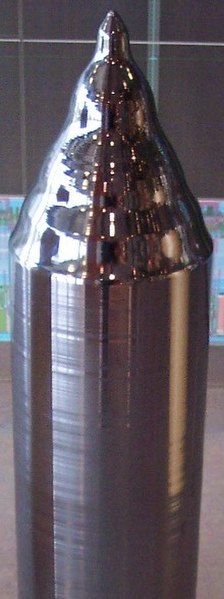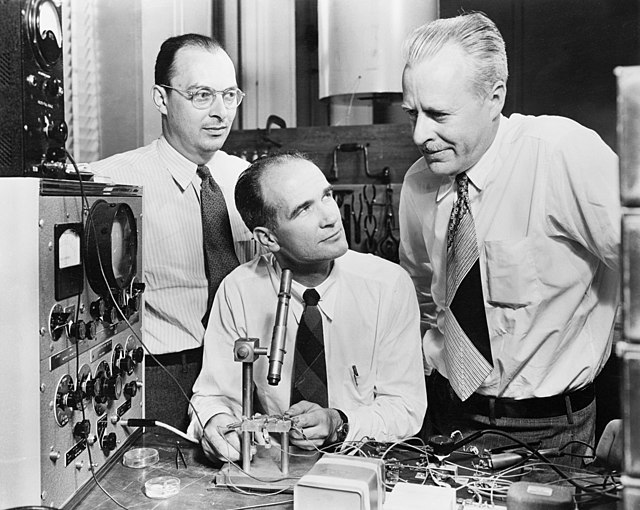An electrical insulator is a material in which electric current does not flow freely. The atoms of the insulator have tightly bound electrons which cannot readily move. Other materials—semiconductors and conductors—conduct electric current more easily. The property that distinguishes an insulator is its resistivity; insulators have higher resistivity than semiconductors or conductors. The most common examples are non-metals.
Ceramic insulator used on an electrified railway
Three-core copper wire power cable, each core with an individual colour-coded insulating sheath, all contained within an outer protective sheath
PVC-sheathed mineral-insulated copper-clad cable with two conducting cores
Pin-type glass insulator for long-distance open-wire transmission for telephone communication, manufactured for AT&T in the period from c. 1890 to WW-I; It is secured to its support structure with a screw-like metal or wood pin matching the threading in the hollow internal space. The transmission wire is tied into the groove around the insulator just below the dome.
A semiconductor is a material that has an electrical conductivity value falling between that of a conductor, such as copper, and an insulator, such as glass. Its resistivity generally falls as its temperature rises; metals behave in the opposite way. In many cases their conducting properties may be altered in useful ways by introducing impurities ("doping") into the crystal structure. When two differently doped regions exist in the same crystal, a semiconductor junction is created. The behavior of charge carriers, which include electrons, ions, and electron holes, at these junctions is the basis of diodes, transistors, and most modern electronics. Some examples of semiconductors are silicon, germanium, gallium arsenide, and elements near the so-called "metalloid staircase" on the periodic table. After silicon, gallium arsenide is the second-most common semiconductor and is used in laser diodes, solar cells, microwave-frequency integrated circuits, and others. Silicon is a critical element for fabricating most electronic circuits.

An ingot of monocrystalline silicon
Silicon crystals are the most common semiconducting materials used in microelectronics and photovoltaics.
Karl Ferdinand Braun developed the crystal detector, the first semiconductor device, in 1874.
John Bardeen, William Shockley and Walter Brattain developed the bipolar point-contact transistor in 1947.







